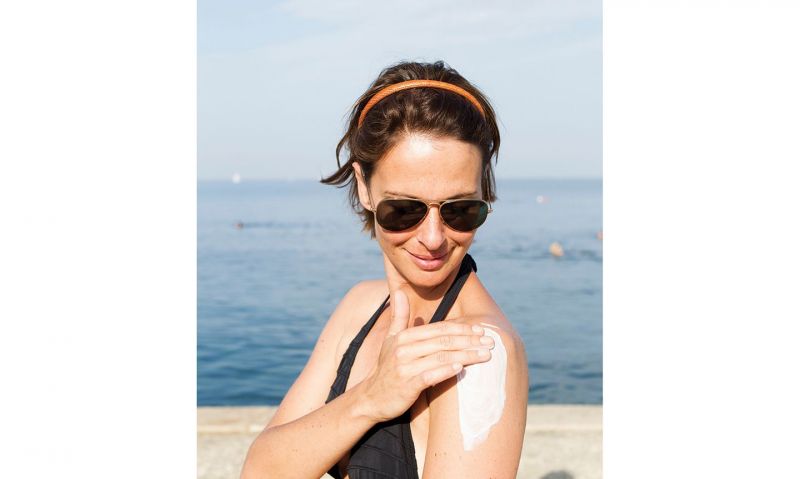
Protect yourself and your skin during summer sunshine.
Summer days mean more sunshine, which can boost our mindset, exercise consistency and vitamin D absorption. At the same time, we’re more prone to sunburns and elevated skin-cancer risk.
Experts recommend limiting sun exposure when UV rays are the strongest, between 10 a.m. and 4 p.m. Reduce your risk of sun damage and skin cancer by staying in the shade. If you must be outside, use sunscreen and wear protective clothing.
Follow these tips to protect yourself and your skin:
Sunscreen The Centers for Disease Control and Prevention (CDC) recommends using a broad-spectrum sunscreen that blocks both UVA and UVB rays and has an SPF (Sun Protection Factor) of 15 or higher before you go outside. The American Academy of Dermatology recommends an SPF of 30. Apply a thick layer about 20 to 30 minutes before exposure, and reapply every two hours.
SPF is a measure of how a sunscreen protects skin from UVB rays, which cause sunburn, damage skin and contribute to skin cancer. If your skin would normally burn after 10 minutes in the sun, applying an SPF 15 sunscreen could protect you from burning for about 150 minutes (a factor of 15 times longer). This is a rough estimate that depends on skin type, intensity of sunlight and amount of sunscreen.
Mineral vs. chemical sunscreens A mineral sunscreen (also called physical sunscreen) uses minerals as active ingredients, most often zinc oxide and titanium dioxide. It sits on top of your skin and reflects UV rays away from your body.
The active ingredients in chemical sunscreens are effective because they absorb the sun’s UV rays. Through a chemical reaction, the sunscreen dissipates the UV rays. Your skin is protected because the UV rays never hit your body.
Protective clothing When possible, wear long-sleeved shirts and long pants or skirts, which can provide protection from UV rays. If wearing this type of clothing isn’t practical, wear a T-shirt or a beach cover-up. Clothes made from tightly woven fabric offer the best protection. Clothing with darker colors may offer more protection than lighter colors. Look for clothing certified as offering UV protection.
Sunglasses These protect your eyes from UV rays and reduce the risk of cataracts. They also protect the tender skin around your eyes from sun exposure, helping reduce wrinkles and other signs of aging. Sunglasses that block both UVA and UVB rays offer the best protection. Most sunglasses sold in the United States, regardless of cost, meet this standard.
Remember that the sun’s rays can reach you even on cloudy days and during other seasons. Use these tips to stay safe throughout the year.
Army veteran Jennifer Campbell is a certified personal trainer with a master’s degree in nutrition education. She works with veterans and civilians, from elite athletes to those just starting their fitness journey. She is commander of the California American Legion’s 24th District.
- Magazine

